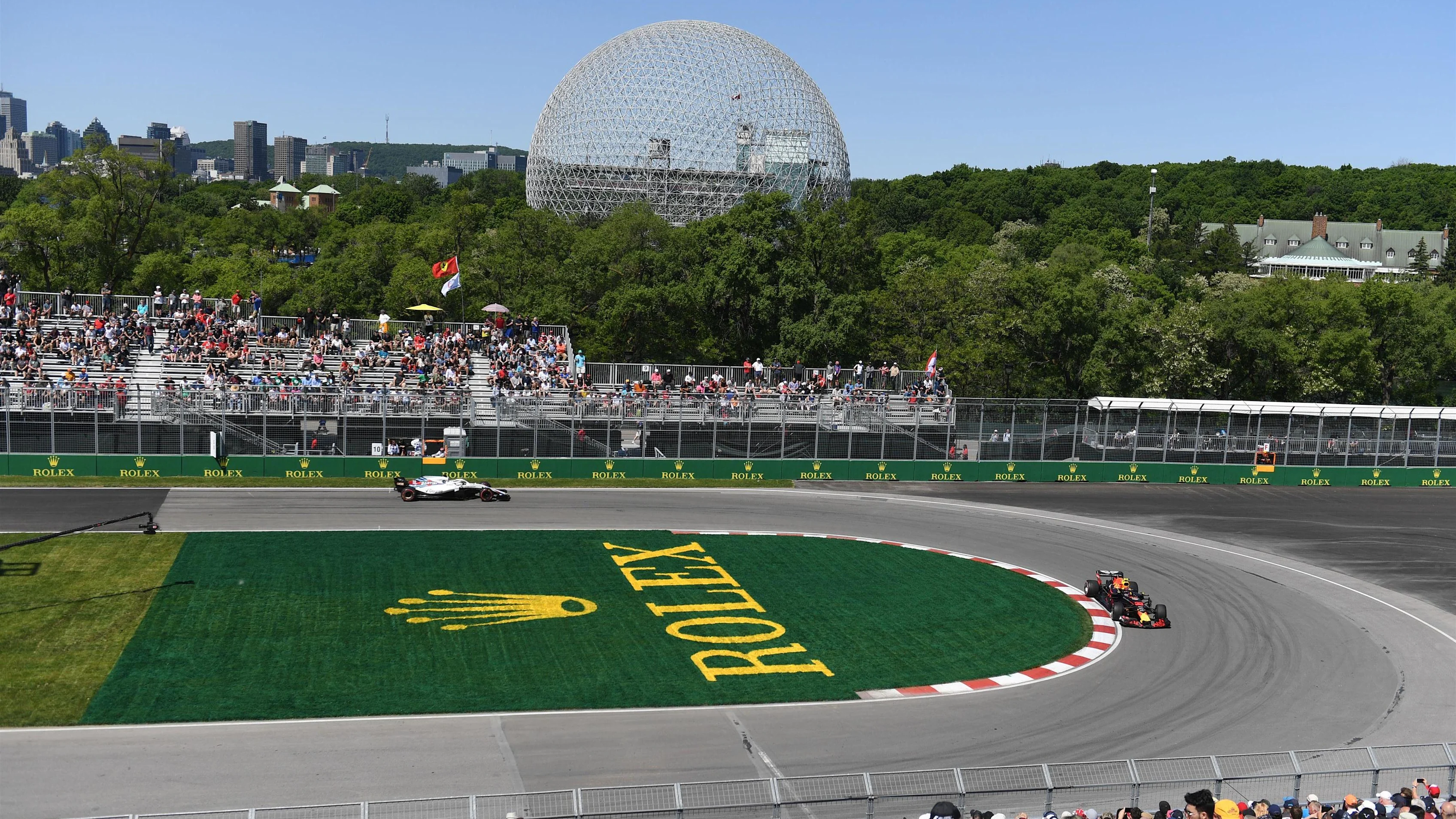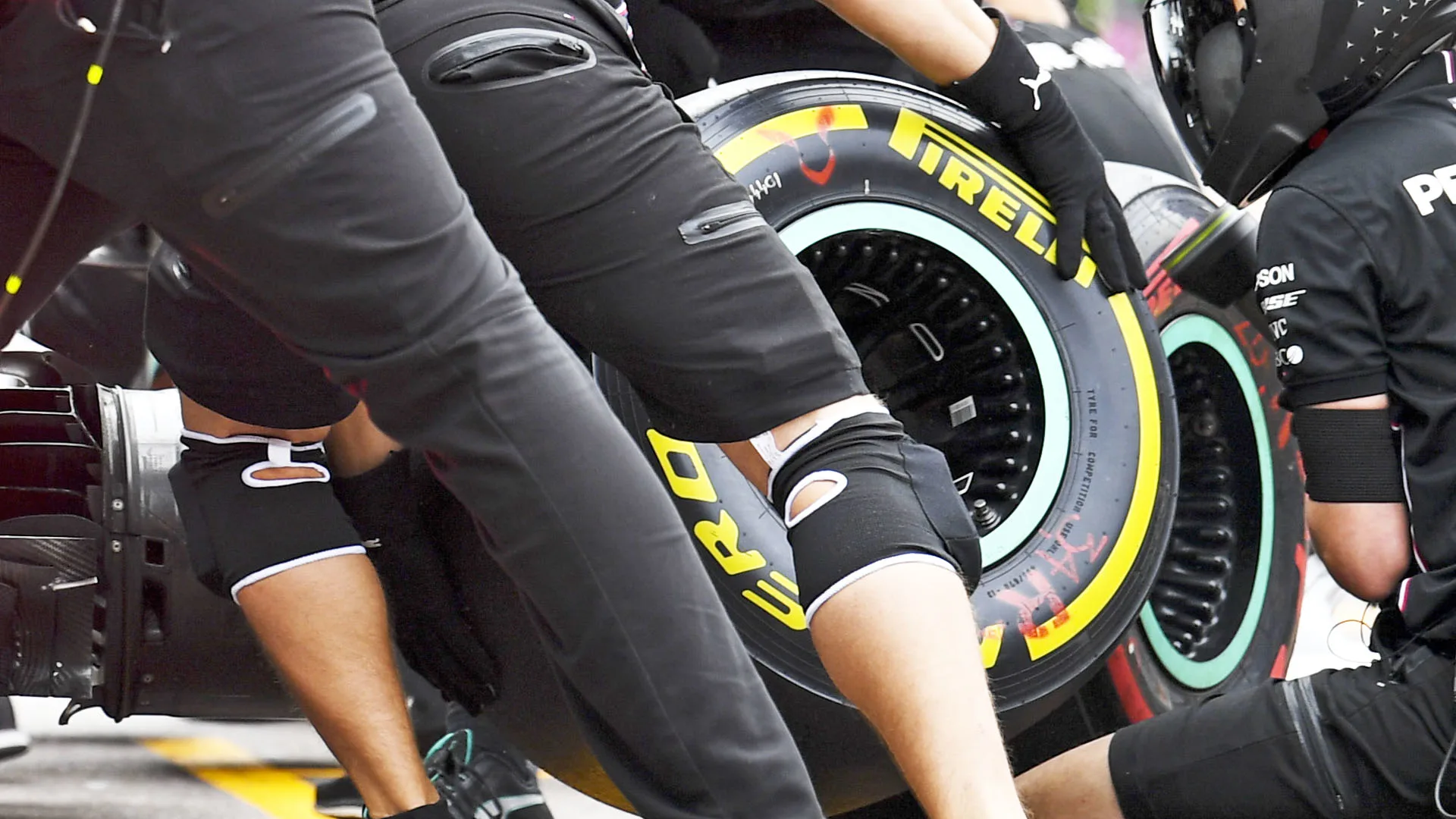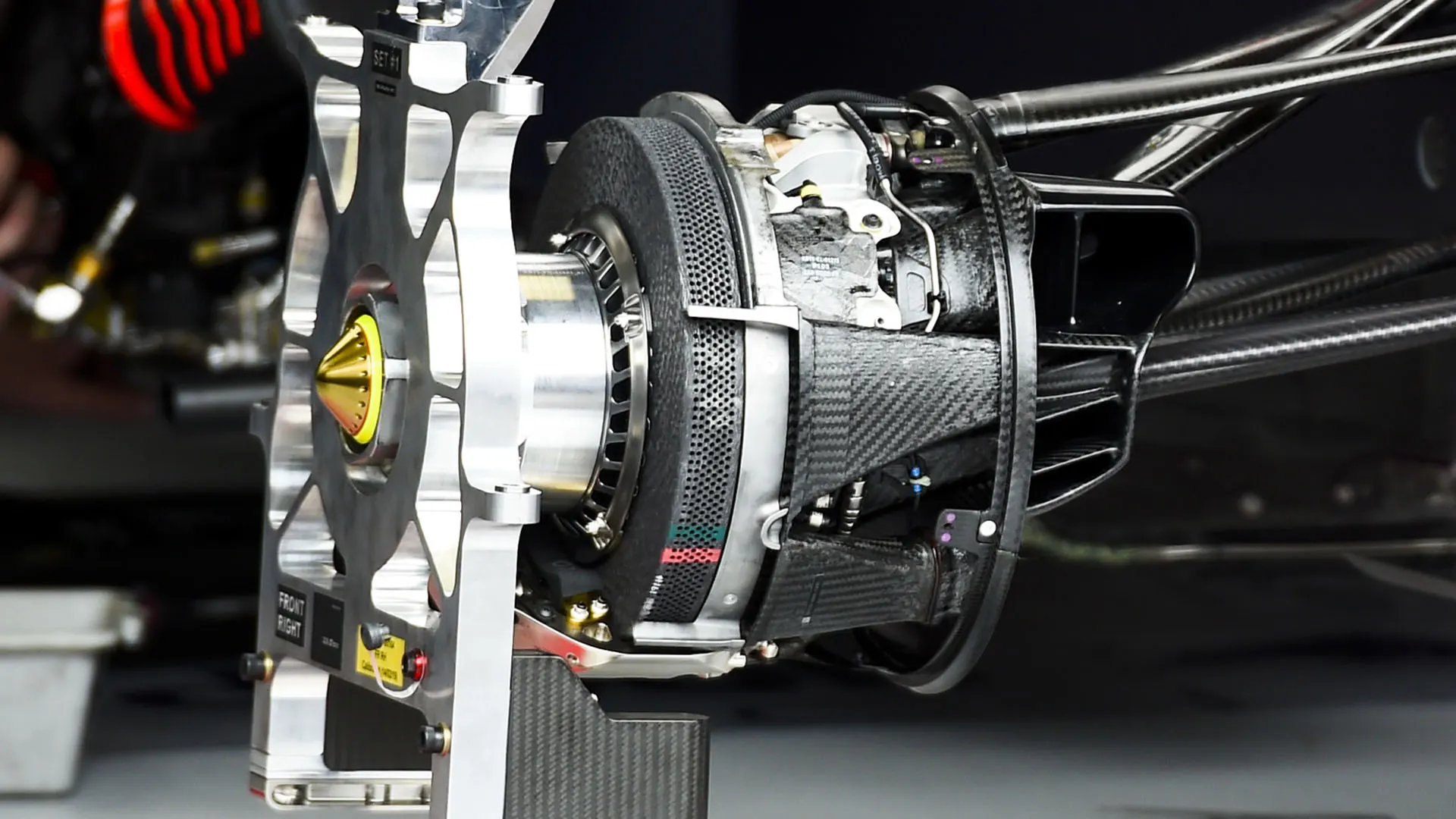Red Bull recently introduced new front brake discs and calipers. These carbon fibre discs feature even more cooling holes than previously – in excess of 1,400, as seen in the image above. This will bring specific benefit at Montreal this coming weekend, for the Canadian track ranks among the very toughest test of brakes seen all season.
The man-made island circuit features a combination of slow corners interconnected by bursts of high-speed straights. This in itself implies a heavy braking energy, but what makes it particularly tough is that, in contrast to Monza for example, the straights are not long enough to allow the brakes to adequately cool before having to be used again.

This presents a very particular problem for carbon fibre brake discs. These discs give their optimum stopping capacity when running at between 400-800 degrees Celsius, a quite normal figure for the brakes of an F1 car. However, when the temperature creeps up much beyond 1,000 degrees Celsius they will oxidise spectacularly.
This process sees the breakdown of the material in a process similar to the rusting of metal but vastly accelerated. The discs will oxidise away to nothing in a very short time if allowed to operate at too high a temperature for too long. Although the passing air gives a cooling effect, it also increases the rate of oxidisation – at least until the disc cools to its working temperature. It is therefore crucially important that the discs do not go over this threshold, so teams must pay particular attention to disc cooling at Montreal.
Although there are regulations limiting the diameter (278mm) and thickness (32mm) of the disc, there are still several ways of improving its cooling:
1 - Through improvements in materials technology, i.e. producing a more heat-resistant material for the disc itself
2 - Through increasing the size of the brake cooling ducts, feeding more air through to the disc
3 - Through wheel rim design
4 - Through fitting as many cooling holes as possible in the disc without compromising its structural integrity

The brake manufacturers are forever advancing materials technology. In the make-up of the carbon fibre there is sometimes a trade-off between the heat-resistance of a material and how much feel it gives to the driver through the brake pedal. In the past, teams have even swapped between brake manufacturers for the Canadian race to give the required trade-off.
The problem with simply increasing the size of the brake ducts is that they are aerodynamically disruptive in a highly aerodynamically sensitive part of the car. Because of this, increasing the size of the ducts is now often looked upon by the perfectionist F1 teams as a tweak of last resort, as it costs vital qualifying lap time. In the race, the driver can be guided into keeping the temperatures of an under-cooled disc under control with a bit of lift and coast as required.
A Montreal race can be highly sensitive to the temperature of the track – and the more cooling holes that can be squeezed into the disc, the harder the car can be driven
The sophisticated wheel rim designs of the last few seasons are used to control how much of the brake-generated temperature is transferred through the rims and into the tyres. Historically, Montreal varies a lot in its ambient temperature – but it can be that a cool track is a real boon, enabling teams to use the rims to direct as much heat away from the overworked brakes as possible in order to bring the tyres up to their required temperature threshold. Obviously that becomes counter-productive if the tyres are already overheating.
In this way, the pace of a Montreal race can be highly sensitive to the temperature of the track – and the more cooling holes that can be squeezed into the disc, the harder the car can be driven for extended periods of time. So let’s see how Red Bull’s new disc fares in Canada – and whether it can play a vital part in closing the team’s deficit to the front.
Next Up



.webp)
.webp)
.webp)

.webp)